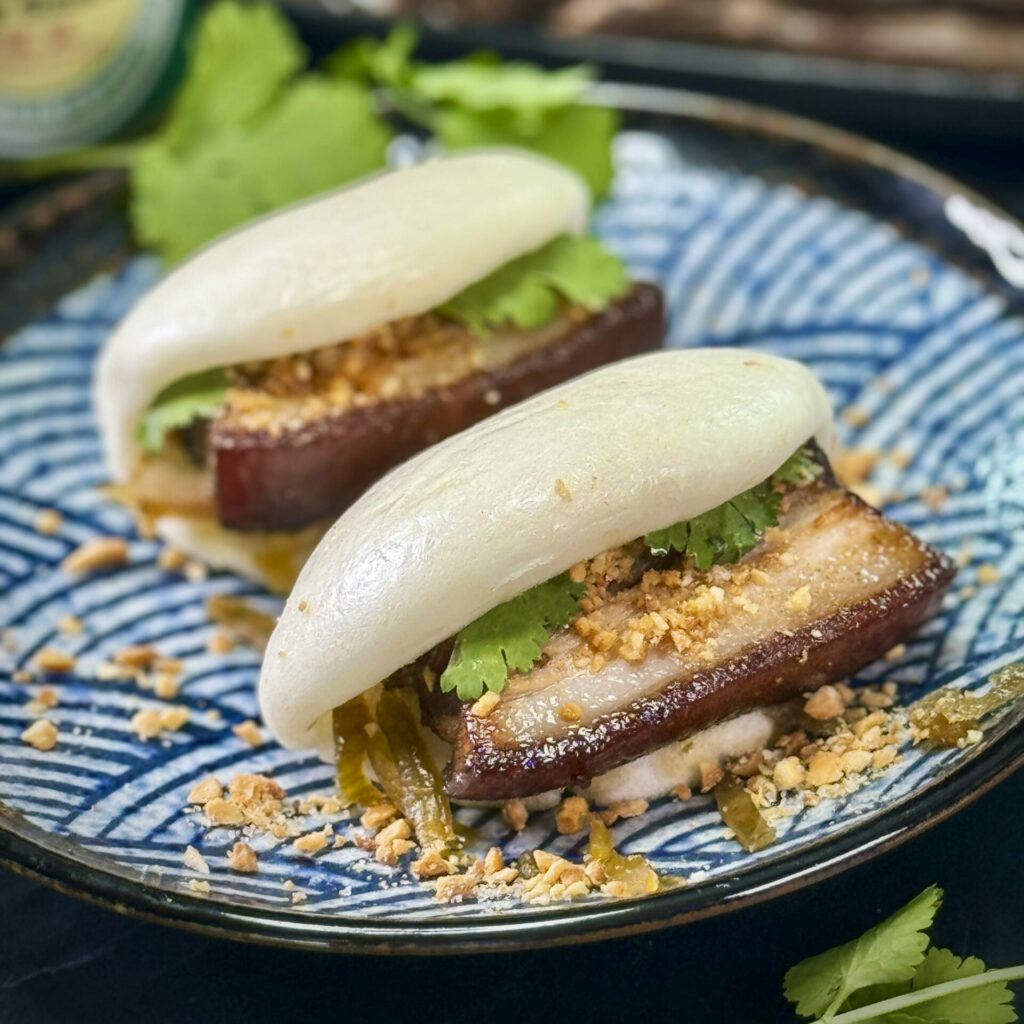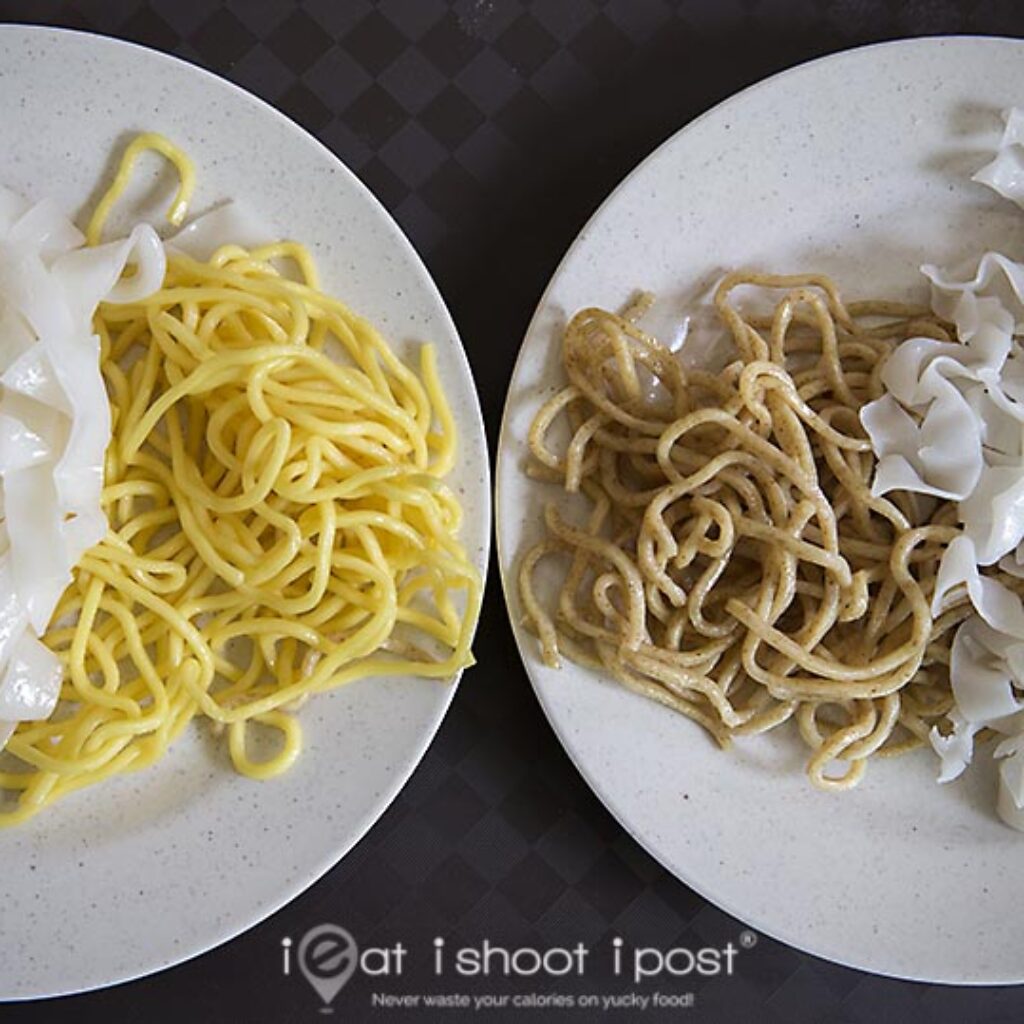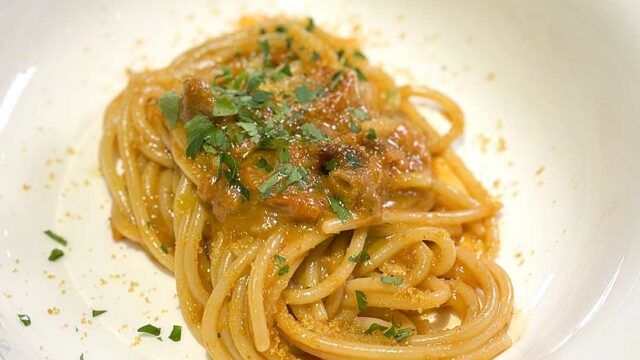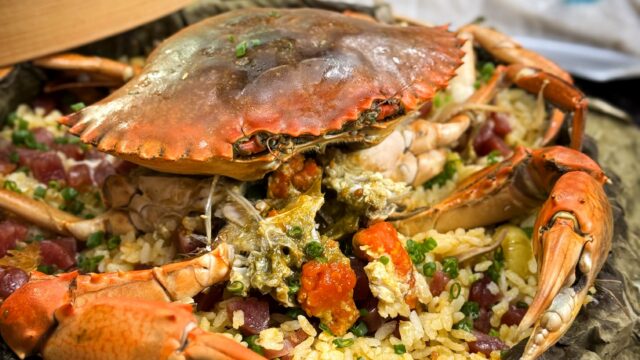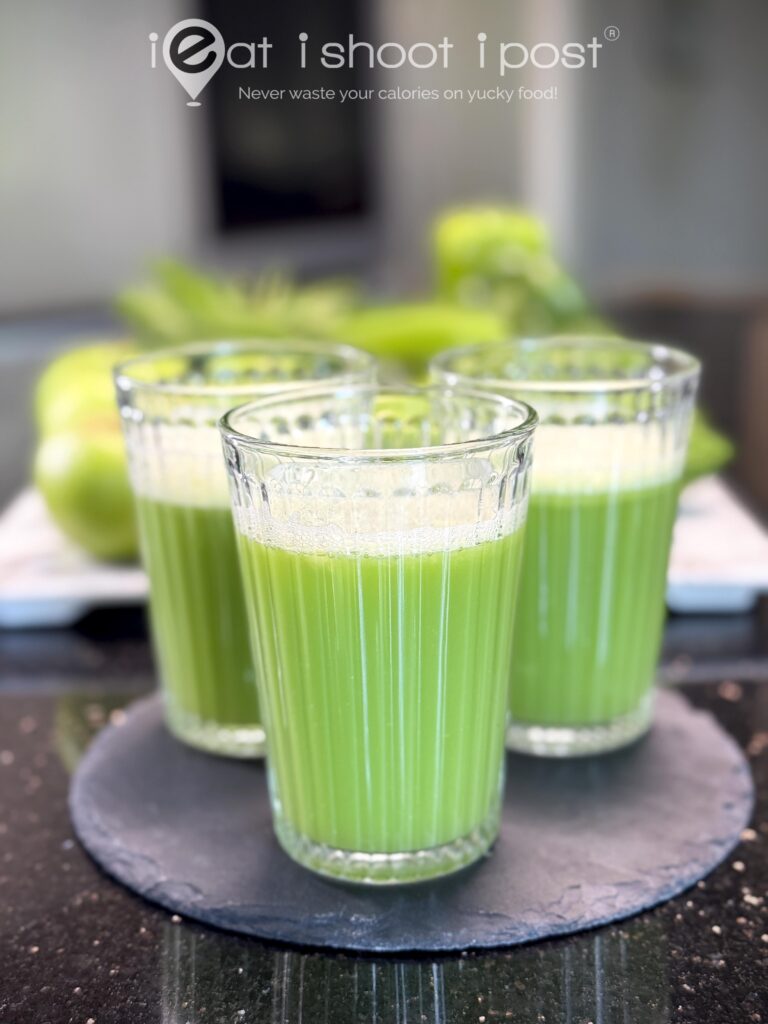
We’ve been enjoying this 5 Greens Fruit and Vegetable juice for the past 15 years! It all began when a friend mentioned she makes this juice to sneak some fiber into her “meatarian” husband’s diet (he refuses to eat anything green) That inspired us to give it a try as well. Since we are often eating out and not having enough veggies, it seemed like a great way to bring some balance to our meals.
Fifteen years later, we’re still at it—juicing six times a week! We blend raw green apples, capsicum, celery, baby bitter gourd, and Japanese cucumbers into a refreshing, nutrient-packed green juice.
We have to admit, it took some time to get used to the taste at first. I still remember a colleague remarking that she could smell the capsicum every time I drank it at the office. But now, I absolutely love both the taste and aroma. I even find myself missing it whenever we travel!`
Nutritional Benefit
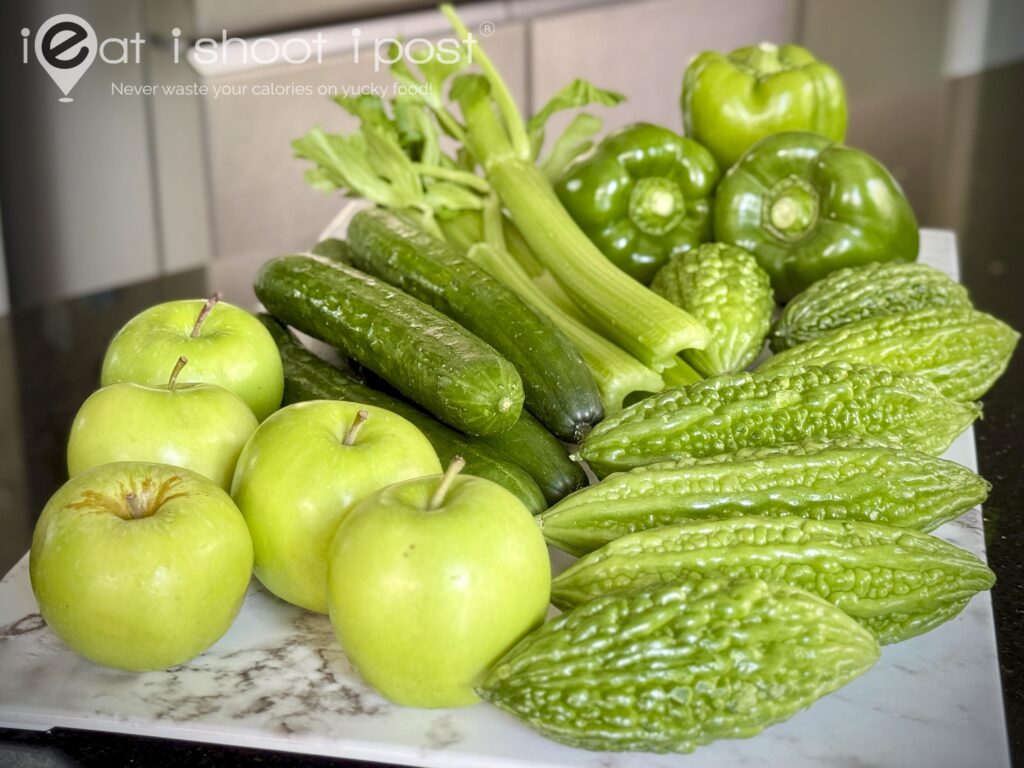
We all know that eating fruits and vegetables is beneficial for our bodies. Green capsicum and apples provide a rich source of vitamin C and antioxidants. Baby bitter gourd and celery offer natural detoxifying properties, while cucumbers, with their silica content, support healthy skin and hair.
After juicing, we mix some of the pulp back into the juice to boost its fiber content. This not only aids digestion but also supports the growth of gut microbiota, which are vital for overall health.
Why green and not red capsicum?
You can certainly use red bell peppers instead of green ones. Red capsicum has more vitamin C and is rich in beta-carotene (vitamin A). However, we recommend sticking to green capsicum, as red varieties have a higher sugar content and tend to be more expensive. Also, it won’t give you the same vibrant green juice.
Why not use the normal bitter gourd, instead of the baby ones?
We occasionally use regular (mature) bitter gourd as a substitute when baby bitter gourds are unavailable. However, baby bitter gourds are typically more nutrient-dense per gram and significantly less bitter, making them our top choice.
Why use green versus red apples?
Our primary reason for using green apples instead of red ones is to preserve the pure green color of the juice! 🙂 But seriously, while green apples are more tart, they have less sugar and are higher in vitamin C and vitamin A. Of course, if we run out of green apples, we’ll occasionally use red ones as a substitute.
Why use Japanese cucumbers and not the regular ones?
Japanese cucumbers have higher vitamin K content and antioxidant levels than the regular ones. They are also a little sweeter and generally better for juicing.
Recipe Card
Yields: 500 – 600ml Green Juice (good for 2 pax)
Prep Time: 20 mins
Ingredients
Green Apples x 3
Green Capsicum 1/2 medium
Celery 1 stalk
Japanese Cucumbers 1 large
Baby Bitter gourd 2 medium
Method
- Prepare 2.5 litres of water and add 1 tsp (or 3 sprays) of fruit and vegetable wash.
- Soak the fruit and vegetables for 3-4 minutes, then rinse thoroughly.
- Remove the seeds of the green capsicum, baby bitter gourd and green apples.
- Chop the veggies to size and start juicing
- Add 1 – 2 Tbsp of the pulp back into the juice
- Drink and be feel healthy!
Preparation Tips and Notes
Washing Fruit and Vegetables

Since we’re consuming the fruits and vegetables raw, it’s essential to wash them with a fruit and veggie wash. This helps remove unwanted contaminants like pesticides and hidden bacteria, which plain water alone can’t effectively eliminate.
Removing Seeds
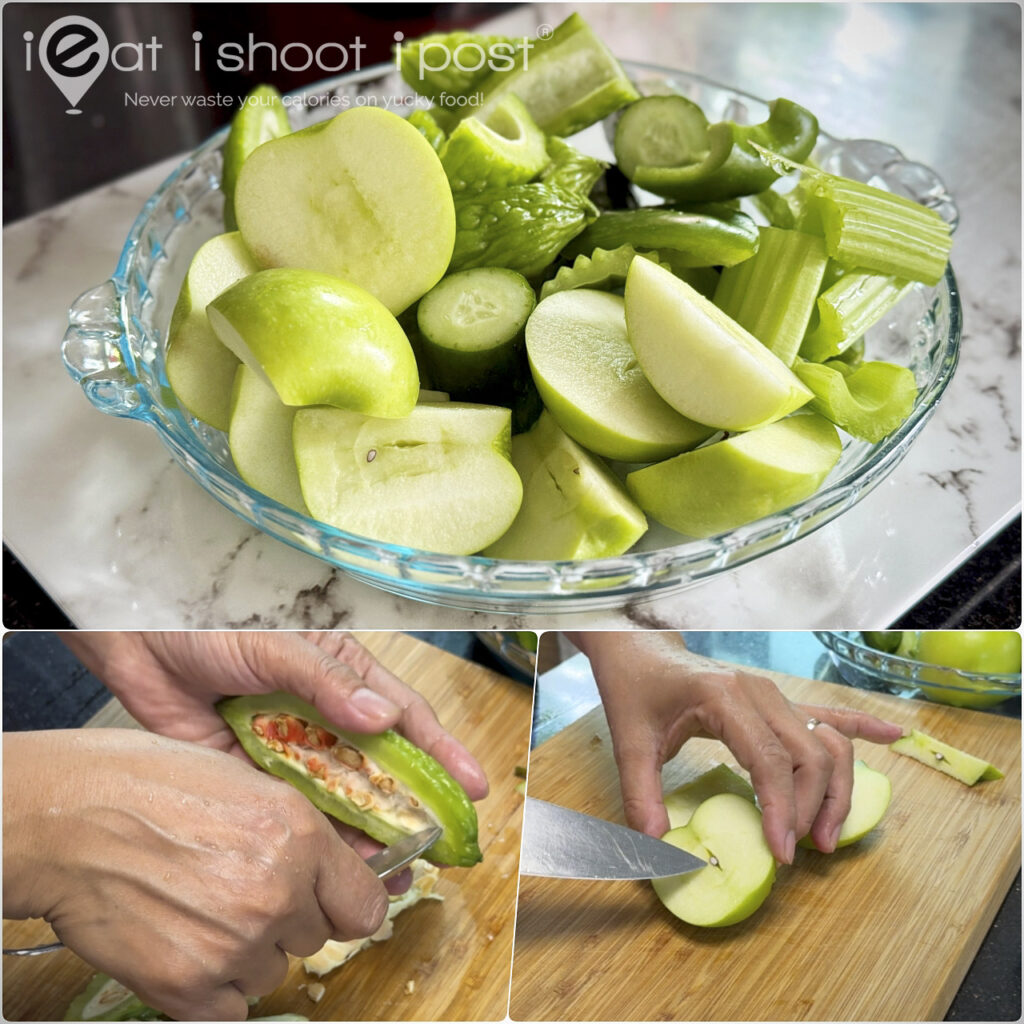
We prefer to remove the seeds from our baby bitter gourd, green apples, and capsicum. For the baby bitter gourd, simply cut them in half lengthwise and use a metal spoon to scoop out the seeds. While it’s not entirely necessary, we find that removing the seeds makes the juice less bitter and much more enjoyable.
Juicers
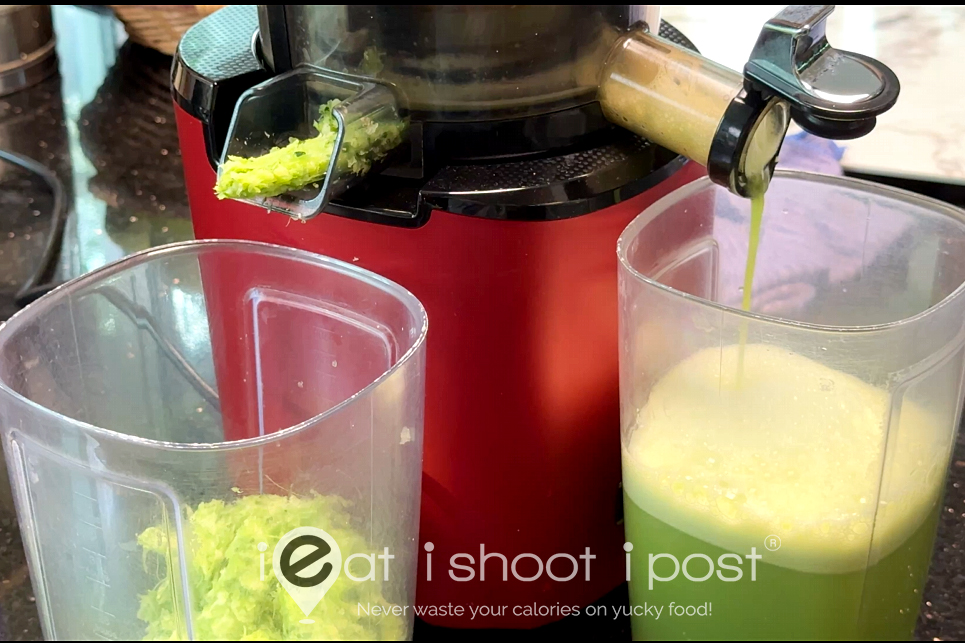
Over the years, we must have gone through at least 3 to 4 juicers. Each played their role in cutting, pressing and squeezing all the juices out of our fruit and vegetables. Some lasted longer than others.
The latest juicer we’re using is the Kuvings slow juicer It features a patented technology called J.M.C.S. (Juicer Module Comprising System), which uses a slow-rotating masticating process to extract nutrients. This means you don’t have to peel your fruits and vegetables before juicing, as the skin is typically where most of the nutrients are found.
At the end of juicing, you will find that the pulp is almost dry, which means you get a great juice yield. It’s also relatively quiet compared to other juicers. However, the price tag is higher than typical juicers. Given our heavy usage, we felt it was worth investing in a sturdy one. Do note that this post is not sponsored by them.
I just spotted another slow juicer in the market called the Russell Taylors SJ2 that has a lower price tag. I may give this a try when our Kuvings calls it a day. If anyone has a good juicer to recommend, please let us know in the comments below.
Conclusion
If one of your new year resolutions is to get healthy, why not incorporate some healthy green juice into your weekly diet! And give this green juice recipe a go! Happy eating and happy juicing to a healthy 2025!
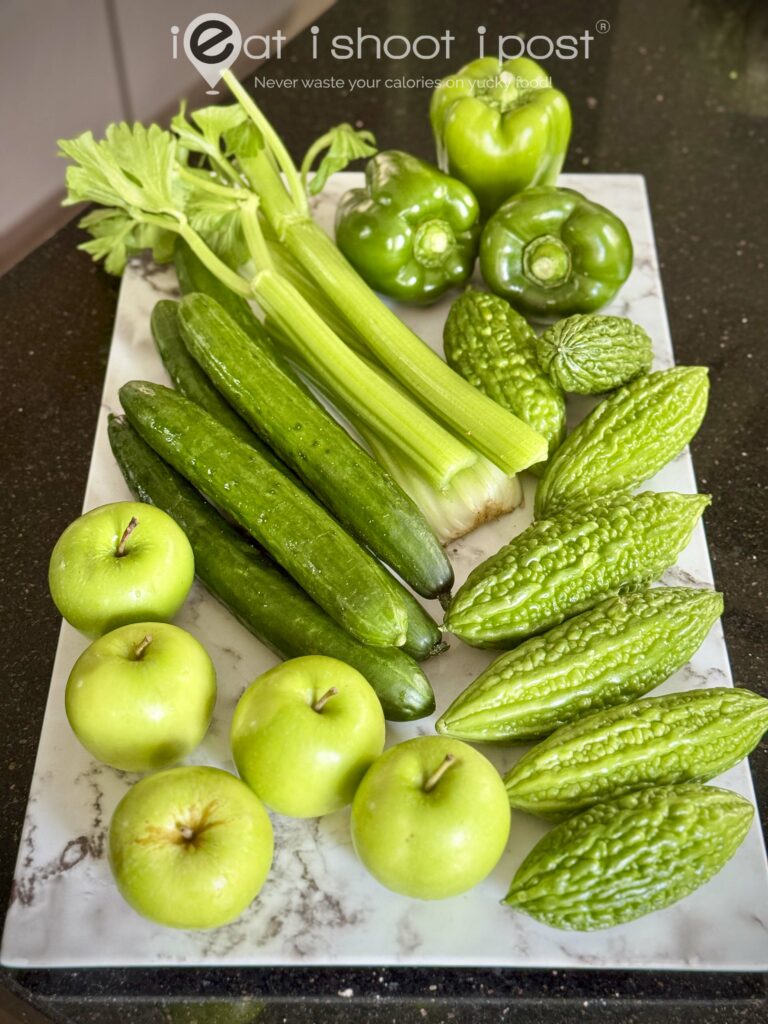
Disclosure: This post contains affiliate marketing links to Amazon and Lazada. We may earn a very small commission should you click through and make a purchase – at no additional cost to you.



